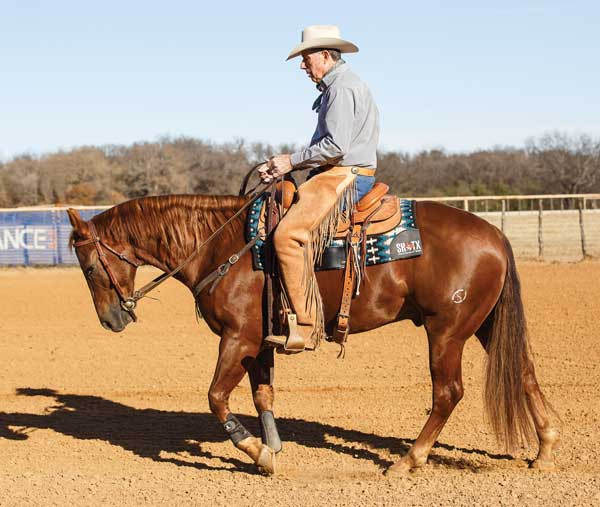Boundless Ranch: Cultivating a feeling of softness on horses
The "soft feeling" can mean many things to a rider. From the rider's ability to communicate with the horse through reins and body cues, to the horse's response to those cues, the term includes dialogue between the two parties.
For AQHA professional rider Alan Walton, a soft feeling is when your horse can easily respond to your direction. But this doesn't happen automatically-horses have a natural tendency to resist pressure. To encourage the best communication between you and your horse, Walton recommends some exercises.
For Walton, the feeling of softness is something given between the horse and the rider.
"When you pick up the reins and ask for some collectibles, and the horse resists, he is pushing you," Walton said. "A soft feeling means no resistance."

Having your horse put pressure on you and then release it when he responds is the foundation of the feeling of softness.
Walton said the communication between you and your horse is one-on-one. You have to be sensitive to horses and your horse has to be sensitive to you, which creates a balance. Your reins are the communication between you and your horse-they are the way you guide his movement.

You may need to tuck the horse into the reins with your legs to encourage this communication.
What does this mean?
"It doesn't just mean taking the reins," Walton said. "When you do the basics with your horse, when you lead him-it's not about the horse-you can ask for a feeling of softness."
This communication is not limited to your hands. Your legs and body play a role. You will use your legs to push your horse towards the reins. Whenever you pick up the reins and ask for a soft feeling and your horse resists, you use your legs to let him into the reins.
The soft feeling also means that your horse will turn his head towards you when you put pressure on the lead rope, or he will lift his feet when you slide your hand to the back of his legs so you can clean it, or he will move his feet aside when you ask him to give you space on the stall.
When your horse supports his body with your clues, when you ride him, he will not be able to give and receive, nor will he be able to perform the movements you ask of him.
Teach your horse
Walton said you have to be consistent with the way horses work. In your interactions with horses, there are many times when you can practice developing a feeling of softness.

For example, when you ask your horse to give you your hand in the saddle or on the ground, you must release him when he does.
"I'm sure you get something back," Walton said. "If he confronts you and you show him that you will support him until he gives and becomes soft, then that soft becomes his release. You release pressure and become his reward."
On the ground:Your horse is tied with harnesses and lead ropes or reins. You can stand next to your horse and have him place a reins or lead ropes with your hand towards your face. Once he responds to you, relieve your stress and repeat.
Make sure both parties do these exercises. You can make your horse soften and lower his head, or soften and yield to the side.
You can go to the end of the reins or lead and get your horse to give in from farther away, and you can get your horse away from you. As you establish an understanding with the horse, keep your answers consistent.
In the saddle: As you circle in circles, use the reins to remind your horse to soften its chin while voting. When he responds by softening the pressure on the reins and giving with his face, release your pressure and repeat on the other side. You can ask him to follow the same pressure and release system with his face, shoulders, ribs or hips.
what to avoid
Inconsistent clues can make your clues meaningless. If you use the reins to hint and he softens your mouth, then you will release your control pressure. This also applies to leg pressure.
"Whenever you put pressure on a horse with the reins or legs, he responds and puts pressure on you, and then you give him some kind of release," Walton said. "But if you don't agree with your clues, your horse becomes confused."
Studying these concepts with your horse every time you interact with a horse will increase your communication and lay the foundation for more complex training.
Previous Article:Yunhaige Farmhouse in Puwa Township, Fangshan, Beijing, has three meals per person on weekdays, surrounded by mountains!
Next Article:"Beijing Minority" Issue 4-Beijing Central Axis
